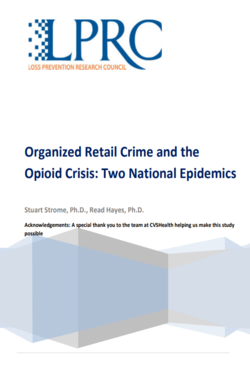By Saša Đorđević
Organized crime and corruption in the Western Balkans have been on the rise since the 1990s, following the war in former Yugoslavia in 1995 and the political-economic crisis triggered by the collapse of pyramid schemes in Albania in 1997. Accordingly, popular, journalistic and academic research on organized crime in these states – namely, Albania, Bosnia and Herzegovina, Kosovo, Montenegro, North Macedonia and Serbia – has also increased. In 1996, for example, the head of Belgrade’s criminal police, Marko Nicović, published the book Droga: Carstvo zla (Drugs: Evil Empire) about the history of organized drug trade and the current fight to curtail it. In 2001, the Serbian Interior Ministry mapped and systematically identified 118 organized criminal groups for the first time in the White Book. In 2002, journalist Jelena Bjelica wrote a study on human trafficking in Europe and the Balkans. In 2005, journalist Miloš Vasić published an in-depth profile of the Zemun Clan, which he described as one of the most powerful criminal organizations in the Balkans during their heyday between 1999 and 2003. One of the first regional projects on the impact of organized crime on peace-building in the region was launched in 2006. Organized crime in the region also sparked interest among international scholars, such as Misha Glenny, who, in 2018, published McMafia, about the global rise in organized crime since the 1980s. Despite the surge in research on organized crime in the Western Balkans, the findings are still insufficient and lacking in certain respects. These works reflect three main trends of illicit economies in the Western Balkans. First, the geography of organized crime has advanced from heroin smuggling through the Balkan route to cocaine trafficking from Latin America to Western Europe, and to the region being a source of particular illicit goods such as weapons and cannabis.6 Second, the politics of illicit economies in the region has evolved from being an ecosystem of political protection for crime facilitators to organized corruption that enriches and shields those with power. Third, following the end of communism and regional wars, the lack of institutional capacity to provide tangible societal improvements resulted in only partial reforms in criminal justice systems across the region. This is despite the 1999 reforms in justice and home affairs fostered by the EU through the Stabilization and Association Process. The objective of this study prepared by the Global Initiative Against Transnational Organized Crime (GI-TOC) is to systematically and strategically identify gaps in the current understanding of organized crime in the Western Balkans, and to suggest future areas of work that could help close these gaps and better understand illicit practices. This gap analysis maps existing knowledge, identifies trends and emerging issues, and reveals the under-researched aspects of illicit economies in the region. With this approach, this study aims to better understand areas of uncertainty and initiate new studies more quickly. Identifying blind spots in the existing literature is a necessary step for creating a new research agenda, establishing strategic and funding priorities and designing research projects that can build the knowledge base, enhance analysis and contribute to evidence-based policymaking.10 Ultimately, this research agenda should aid in the prevention and disruption of organized crime both in the Western Balkans or perpetrated by criminals from the region. After first describing the methodology and data collection techniques of the gap analysis, the paper explains the scale, scope and impact of organized crime and corruption research in the Western Balkans. It then examines the main thematic focus of research on organized crime in the region – namely, criminal markets, criminal actors, and the resilience of state and non-state actors to organized crime and corruption. The third part lays out recommendations and further steps to better understand and increase knowledge of the illicit economies in the Western Balkans.
Geneva: The Global Initiative Against Transnational Organized Crime. 2023. 38p.





















